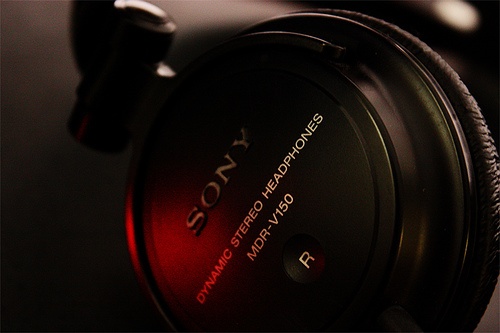Artists have a long list of considerations when they’re choosing a recording studio. It’s important to choose a location that has the gear you need for everything from the earliest stages of music production to mastering and mixing. Unfortunately, bigger isn’t always better, and there’s no clear-cut choice for elements like sample rate. Understand your options, and do what’s best for your band.
The Basics of Sample Rates

Image via Flickr by lestermo21
The sample rate determines how often an analog signal is measured, or sampled, each second. During recording, the analog to digital converter (ADC) takes snapshots of the audio. The standard sample rate for CDs is 44.1kHz. This number is determined by roughly doubling the highest audible frequency in the signal. The human hearing range is 20Hz-20kHz, so a 40kHz sample rate properly translates the audible portion of the signal.
Bit depth is the second part of the sample rate equation. Bit depth defines the dynamic range of the sound. Higher bit depth gives you improved waveform resolution. While you want to record at a high sample rate and bit depth, choosing the exact sample rate is more complex.
The Case for Higher Sample Rates
Thanks to modern advances in technology, artists can now go to the music studio and record at extremely high sample rates up to 192kHz. The purported appeal of high sample rate audio is the ability to capture more of the actual sound, hopefully providing a more realistic listening experience for fans. While there’s little point to recording at sample rates of 192kHz, there are some solid arguments for compromising a bit at 96kHz.
Plug-in effects often up-sample to 96kHz internally anyway. Using a higher sample rate with your audio music recording can prevent aliasing problems that are common with cymbals, brass, and some string instruments. A sample rate that’s moderately higher can also smooth out high frequency filters. However, you should work with your recording engineer to make sure you don’t overcompensate for higher sample rates by setting filters too high.
Drawbacks of High Sample Rates
As mentioned above, the human ear can only hear certain frequencies. In theory, a higher sample rate will only capture frequencies at extremely high and low ends of the spectrum where listeners can’t even hear them. This means you’re spending more and using more space for music that doesn’t have a noticeable improvement in sound.
Fans of higher sample rates argue that higher and lower frequencies alter the way we perceive audible frequencies, so they do change your perception of the music. However, it is also true that distortion increases at the highest and lowest frequencies. If a transducer reproduces ultrasonic sound with audible content, nonlinearity can cause the ultrasonic sound to shift into the audible range, distorting the music.
If you’re looking for a well-equipped Connecticut recording studio to help you with your next album, the Carriage House can create classic analog sound. Carriage House Studios has an award-winning staff on hand to help you navigate all the finer points of music production in a stunning space.
![]()

It has to do with mix down, if you have 24 channels going to two they are going to compete for space. PERIOD!